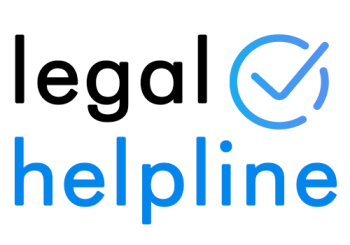In this guide we will look at bone fracture claims. If you’ve broken a bone as the result of a third party’s negligence, then you may be able to claim. This could happen in a road traffic accident, at work or in a public place.
In order to make a personal injury claim, you must prove that you were owed a duty of care and that a breach of this caused your broken bone. We look at the legislation that is in place to protect you in various scenarios. Additionally, we provide examples of accidents that could cause injuries and an explanation of who owes you a duty of care.
If you decide to claim compensation, you may find the process easier with a solicitor. We explore No Win No Fee agreements and how one could help you fund the work of a legal representative.
Get in touch with our advisors if you have any questions about bone fracture claims:
- Call 0333 000 0729
- Contact us online
- Use the live chat

Select A Section
- Who Could Make Bone Fracture Claims?
- Types Of Bone Fractures You Can Claim For
- Common Causes Of Bone Fractures
- How To Claim For A Fractured Bone
- Bone Fracture Claims Calculator
- Why You Should Choose Legal Helpline To Make Bone Fracture Claims
Who Could Make Bone Fracture Claims?
If you broke your bone due to a third party’s negligence, you may be able to make a personal injury claim. When at work, in a public space or on the roads, you are owed a duty of care.
The Health and Safety at Work etc. Act 1974 (HASAWA) sets out the duty of care employers owe their employees. This means that employers must take reasonable steps to reduce workplace risks.
Road users owe each other a duty of care to act in a way that reduces risks to themselves and other road users. The Highway Code is a set of rules and guidelines that all road users should follow. Furthermore, the Road Traffic Act 1988 outlines the duty of care that drivers, riders and cyclists have on the road. Failure to adhere to this could cause a road traffic accident.
The Occupiers’ Liability Act 1957 states that the party in control of a space, known as an occupier (although they don’t need to occupy the space), owes a duty of care to those who use it. This means that the occupier of a space that can be accessed by the public, such as a shop, restaurant or public park, must reduce risks to visitors.
To make valid bone fracture claims, you must prove that:
- You were owed a duty of care.
- A third party neglected their duty of care.
- Injuries occurred due to this negligence.
Speak to our advisors to learn about what evidence could support your broken bone compensation claim.
Time Limits For Broken Bone Claims
You may be wondering how long you have to make a broken bone injury compensation claim. The Limitation Act 1980 sets out the time limits for different kinds of claims, and this legislation states that you have three years to start a personal injury claim. This starts on the date that you sustain your injuries.
However, this time limit comes with some exceptions. For example, the time limit does not apply until the claimant turns eighteen; as such, those injured while under the age of 18 must wait to start their own claim. While the time limit is frozen, a litigation friend can make their claim on their behalf.
Similarly, the time limit is indefinitely frozen for those who lack the mental capacity to claim for themselves. It reinstates if they recover the appropriate capacity, but otherwise, a litigation friend can make the claim on their behalf.
To find out more about the time limit to claim broken bone compensation, contact our team of helpful advisors today.
Types Of Bone Fractures You Can Claim For
Bones can break in different ways. Examples include:
- Transverse fracture- a straight break across the bone.
- Spiral fracture- a twisting broken bone.
- Greenstick fracture- a fracture where the bone bends and cracks instead of breaking fully
- Stress fractures- occur when tiny cracks appear in the bone due to repetitive stresses.
- Compression fractures- occur in the back due to the vertebrae caving in or pressure on the bone.
- Impacted fracture- the bone fragments drive into one another instead of separating.
- Open fracture- a break that pierces the skin. It can also be called a compound fracture.
- Closed fracture- when the bone doesn’t pierce the skin.
- A displaced fracture- when the bones have misaligned or moved apart.
It doesn’t matter what kind of fracture you’ve experienced. Any fracture injuries caused by negligence have the potential to result in broken bone claims. Speak with a member of our team for more guidance.
Broken Bone Injuries You Could Claim For
As stated previously, in order to claim, you must prove that you were owed a duty of care and that a breach in this duty caused your injuries. If you can prove negligence caused your broken bone, you could have a valid claim.
You might break your:
- Skull, which could cause a brain injury.
- Arm.
- Clavicle.
- Wrist.
- Hip or pelvis.
- Ankle or foot.
- Leg, including the femur, fibula or tibia bones.
- The metatarsal bones in the foot or the metacarpal bones in the hand.
Contact our personal injury claims team for more information on bone fracture claims 24 hours a day, 7 days a week.
Common Causes Of Bone Fractures
Broken bones can arise from a wide range of situations. In order to make a valid personal injury claim, you must prove your broken bone was caused by third-party negligence. We’ll explore evidence to support your broken bone claim further in this guide.
Bone fracture causes include:
- Workplace injuries. This could be due to defective work equipment, or insufficient training, for example.
- Road traffic accidents. For example, you could break your bones as a cyclist or pedestrian hit by a car, or you could be in a motorcycle accident caused by a driver’s negligence. Additionally, you may be the passenger in a car where the driver was at fault; you may still be able to claim.
- Public spaces. You may trip over uneven paving, for example, and break your forearm. This could occur in many locations, such as a train station, car park or shopping centre.
Talk to our advisors about the situation that caused your bone fracture. They may be able to confirm if you have a valid case.
How To Claim For A Fractured Bone
Following an injury, you might have taken steps that could help support your personal injury claim. You could:
- Seek medical attention.
- Note witness details.
- Request CCTV footage that captured the incident.
- Take photographs of the scene, your injuries or the cause of the accident.
You can also contact our advisors for free legal advice before launching a claim. They can discuss what evidence could support bone fracture claims. Additionally, they may be able to connect you with a lawyer from our panel.
Bone Fracture Claims Calculator
Two heads could make up a personal injury claim settlement. These are general damages, which compensate you for the pain and suffering caused by your injuries, and special damages, which could recover costs incurred due to your injuries. We explore both in more detail below.
Bone Fracture Claims General Damages
General damages can compensate you for your physical and mental injuries. You may be required to attend an independent medical assessment as part of the claiming process. This allows for a fuller understanding of your injuries and what impact they have on your life and may have on your future.
To help assign value to personal injury claims, legal professionals, such as personal injury lawyers, will use the Judicial College Guidelines (JCG). This document provides a list of injuries alongside compensation brackets based on previous successful claims. We can’t provide you with the exact amount you will receive; however, the table below contains examples of figures from the 16th edition, published in April 2022.
| Injury | Severity | Potential Compensation | Notes |
|---|---|---|---|
| Pelvis and hips injuries | Severe (a) (i) | £78,400 to £130,930 | Substantial residual disabilities from extensive pelvis fractures. |
| Foot injuries | Severe (d) | £41,970 to £70,030 | Substantial mobility restrictions and considerable permanent pain from fractures to both heels. |
| Other arm injuries | Permanent and substantial disablement (b) | £39,170 to £59,860 | Significant permanent disability from serious forearm fractures. |
| Severe leg injuries (b) | Serious (iii) | £39,200 to £54,830 | Instability, prolonged treatment, near-certain arthritis from serious compound or comminuted fractures. |
| Back injuries | Moderate (b) (i) | £27,760 to £38,780 | Residual disability from a back injury, such as a compression fracture. |
| Hand injuries | Severe finger fractures (f) | Up to £36,740 | Impairments, deformity and possible partial amputation from severe fractures. |
| Ankle injuries | Moderate (c) | £13,740 to £26,590 | Less serious disabilities from fractures. |
| Toe injuries | Serious toe injuries (d) | £9,600 to £13,740 | Permanent disability from injuries including serious injuries to big toe, or crush or fractures to two or more toes. |
| Elbow injuries | Moderate or minor | Up to £12,590 | No permanent disablement from injuries, such as simple fractures. |
| Wrist injuries | (d) | £6,080 to £10,350 | Complete or largely complete recovery taking longer than 12 months from fracture. |
Bone Fracture Claims Special Damages
You may have incurred costs due to your broken bone that you wouldn’t have incurred if the injury didn’t happen. Under special damages, you could recover these costs, including loss of earnings if you were unable to work and medical expenses. You must submit evidence, such as receipts, payslips or invoices.
Talk to our advisors to learn more about how damages are awarded in bone fracture claims. If you have a valid claim, you could be connected with a No Win No Fee solicitor from our panel.
Why You Should Choose Legal Helpline To Make Bone Fracture Claims
A personal injury solicitor could help file your claim ensuring all damages are covered. You might be able to use a Conditional Fee Agreement (CFA) to fund their work. This is a kind of No Win No Fee agreement.
You won’t pay an upfront solicitors fee under a CFA. A success fee will be taken from your award should your claim succeed. Legal caps apply. However, if your claim isn’t successful, you won’t have to pay your lawyer for their services.
Our personal injury claims team can answer your questions about bone fracture claims. If you wish to proceed with a claim and it seems valid, you could be connected to one of the personal injury solicitors from our panel.
To start your claim today:
- Call 0333 000 0729
- Contact us online
- Use the live chat.
Related Broken Bone Claims
We’ve provided links you may find helpful when researching bone fracture claims:
- Signs and Symptoms of a Broken Bone NHS Guide
- Caring for Your Plaster Cast NHS Guide
- Think! Road Safety
Additional personal injury guides:
Written by DSB
Edited by FS




